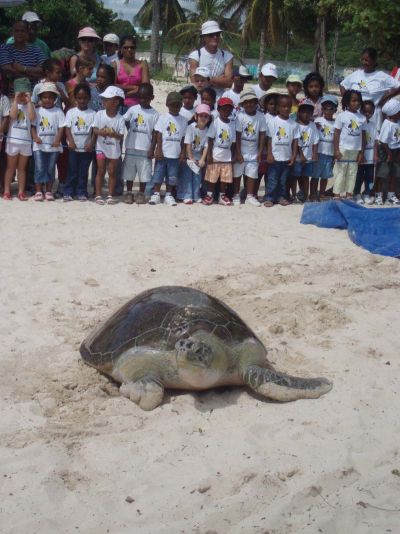- Preface and Intent
- Admissions
- Analgesia and Anesthesia
- Clinical Pathology of Sea Turtles
- Death Criteria
- Debilitated Turtle Syndrome
- Euthanasia
- Formulary
- Hook Removal
- Husbandry
- Pain
- Parasites
- Physical Exam
- Radiographic Anatomy
- Radiographic Technique
- Release Criteria
- Sample Collection Techniques
- Selected Surgical Techniques
- Veterinary Supplies
- Wound Management / V.A.C. Therapy
- Future Topics
- Want To Know More?
Marine Turtle Trauma Response Procedures: A Veterinary Guide
Terry Norton and Nancy Mettee (Editors). 2020. WIDECAST Technical Report No. 20.
- Preface and Intent
- Admissions
- Analgesia and Anesthesia
- Clinical Pathology of Sea Turtles
- Death Criteria
- Debilitated Turtle Syndrome
- Euthanasia
- Formulary
- Hook Removal
- Husbandry
- Pain
- Parasites
- Physical Exam
- Radiographic Anatomy
- Radiographic Technique
- Release Criteria
- Sample Collection Techniques
- Selected Surgical Techniques
- Veterinary Supplies
- Wound Management / V.A.C. Therapy
- Future Topics
- Want To Know More?
Release Criteria
It is often difficult to determine when a turtle is ready for release back into the wild. Decisions are based on a variety of factors, including the health of the turtle, availability of space, ambient temperature, and weather conditions. Most turtles would be safer in the ocean if the hospital is in the path of a major hurricane. A sea turtle that is close to release may be considered for release early if a more severe case is admitted that needs the tank space. Leatherbacks (Dermochelys coriacea) become so stressed in captivity that release is often the best medical option.
Subjectively, we like to see turtles aggressively feeding, and exhibiting a "pacing" type of behavior. The pacing behavior typically develops when the turtle has sufficient strength for extraneous activity. It involves a restless movement back and forth in the tank during waking hours. These turtles are strong and often become agitated when handled.
Objectively, a number of criteria may be used to evaluate a patient undergoing rehabilitation for release:
Normal blood work parameters
- To be determined by rehab veterinarian
- Normal packed cell volume (PCV) and total protein, white blood cell count and cellular morphology with no severe plasma biochemical parameter abnormalities
Gaining weight steadily for 4 weeks
- Actively feeding and able to dive and retrieve food
- Ability to capture live food, if appropriate
Off medications for at least 2 weeks
- No oral or injectable medications with the exception of vitamin supplements
All injuries/surgical sites healed
- Ideally no open wounds, no bleeding edges
- Only mature (often pigmented) granulation tissue
- Clinical judgement may be needed in some cases to assess whether the wounds will heal in the wild; some wounds are more likely to heal better, especially in patients that are stressed by being in captivity
Normal activity, strength, and responses
- Active, often pacing, strong and feisty with effective escape attempts
Tagged
- Passive Integrated Transponder (PIT) tag has been inserted and, if the turtle is of an appropriate size, flipper tags have been placed, along with final measurements recorded
- In some instances (amputation), tagging may be customized
Based on the health issues which prompted hospitalization, the following may also be included:
- No radiographic evidence of osteomyelitis or other deleterious abnormalities
Release location
In most cases, the turtle should be released near where it stranded, although there are instances where this is not feasible (e.g., cold-stunned turtles may be released in warmer water). During growth and development, sea turtles use a variety of different habitats. Returning them to an area near the stranding location will allow them to return to their preferred habitat for foraging. Releases are daytime only, with the exception of hatchlings which should be released in the late evening or nighttime to avoid attacks by visual predators.
Release protocol
Releasing a patient is truly a cause for celebration, and it’s a moment to focus public attention on your rehabilitation program. If a release has been planned from the beach, it is an opportunity for public outreach and much needed publicity. Patient safety is the number one concern. The release procedure should be detailed and communicated to all involved.

This chapter should be cited: Norton, Terry and Nancy Mettee. 2020. Release criteria, in Terry Norton and Nancy Mettee (Editors), Marine Turtle Trauma Response Procedures: A Veterinary Guide. WIDECAST Technical Report No. 20. https://seaturtleguardian.org/release-criteria Accessed [date].